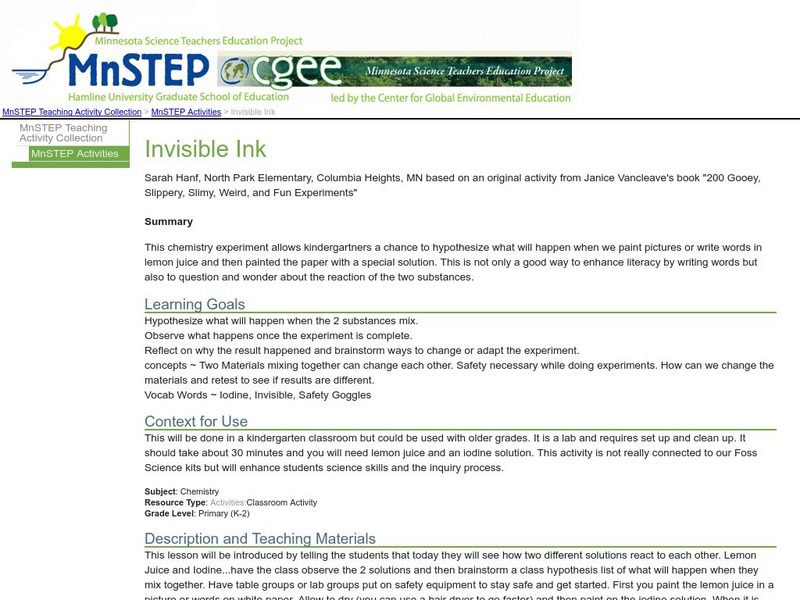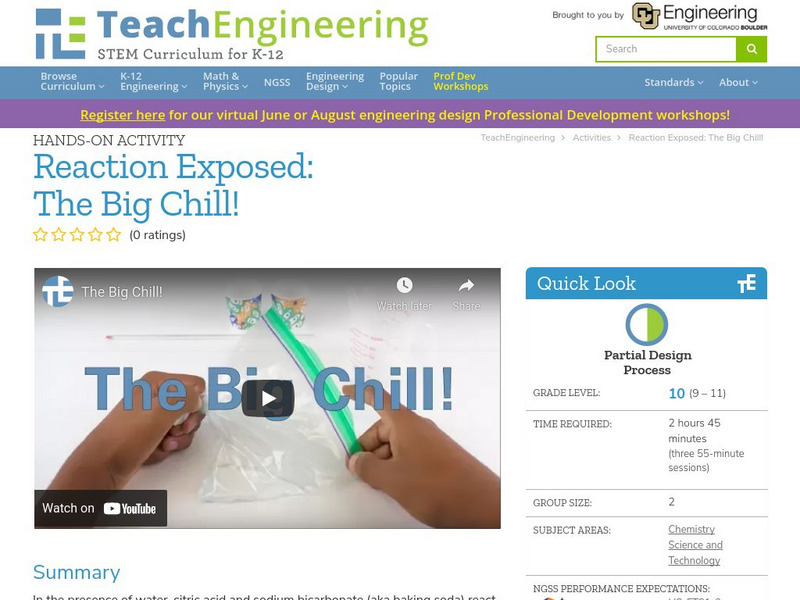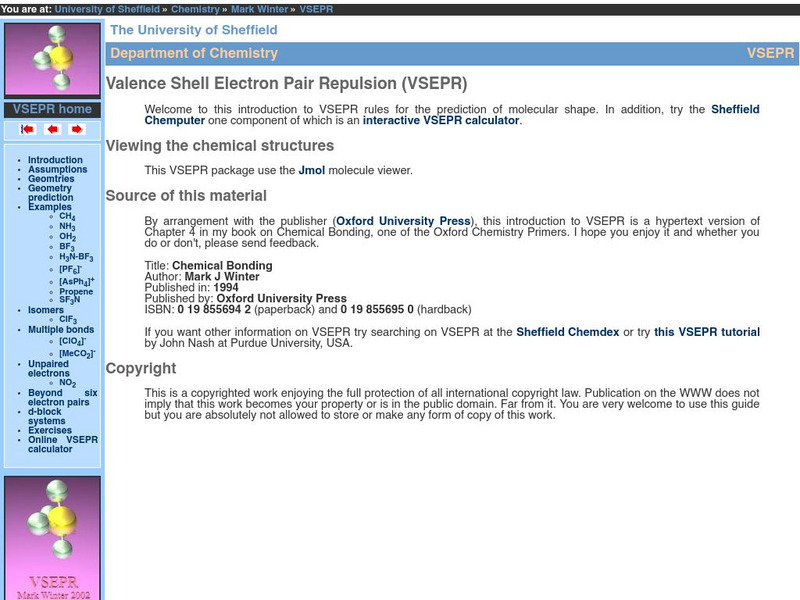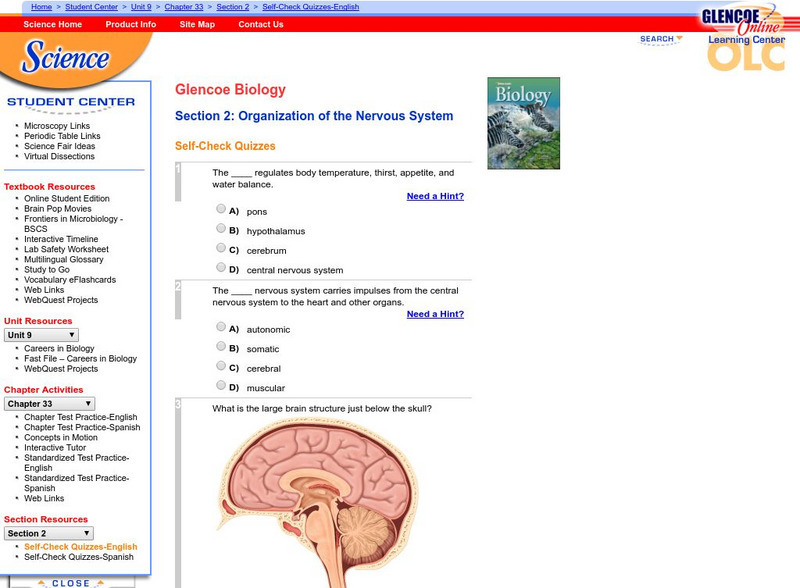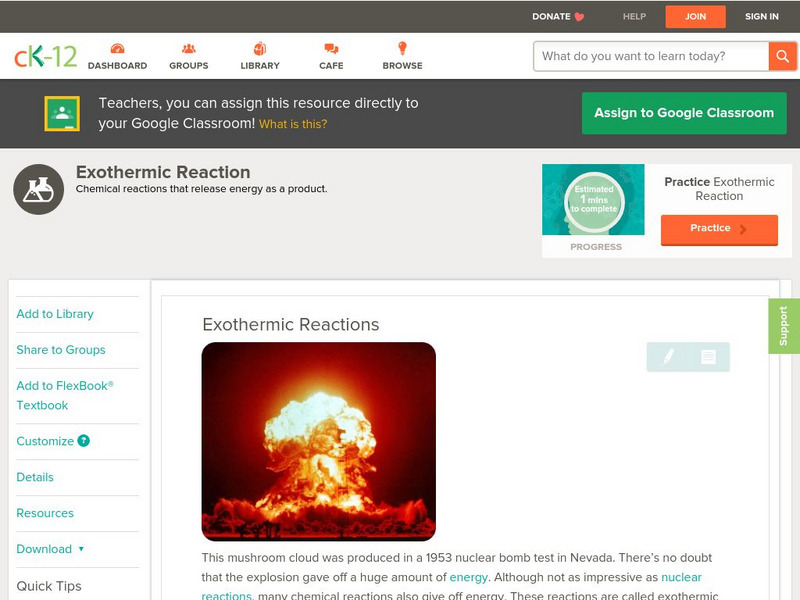Curated OER
What Sticks Can Make You Sick
Students study adhesins and their receptors. In this science inquiry lesson students experiment to find adherence and use agglutination to identify adhesins.
Curated OER
Balancing Equations
In this balancing equations worksheet, students determine the type of reaction and write the balanced equation. Students read the word description and write the symbol of each element using the periodic table.
Curated OER
Newton's Laws of Motion
In this physics worksheet, students identify and locate vocabulary terms related to Newton's Laws of Motion. There are 16 words located in the puzzle.
Curated OER
Pop Rockets
Middle schoolers study Newton's Third Law of Motion which involves action and reaction. They discover what makes a rocket go and then design and construct a rocket that will launch the furthest using the pressure created by an antacid...
Curated OER
Vinegar Experiment
Fifth graders mix vinegar with different substances and explore the reaction. They record data from the experiment. Students examine chemical change, reaction, physical change and physical reaction.
Curated OER
Bleach Chemical Reactions
Students learn what happens when bleach comes in contact with various cloth fibers, chemical colors, nature and synthetics.
PBS
Pbs Learning Media: Chalk Sculpture
In this video segment from Art in the 21st Century: Paradox, two artists create a public art piece using giant pieces of chalk.
Science Education Resource Center at Carleton College
Serc: Investigating Newton's 3rd Law: Coin Flick
In this elementary physics investigation, students explore Newton's 3rd Law of Motion: To every action there is an equal & opposite reaction. Pairs of students will line up 5 pennies, (touching each other), between 2 rulers. The row...
Science Education Resource Center at Carleton College
Serc: Invisible Ink
Students will get to experiment with "invisible ink" to enhance their literacy skills and their understandings of reactions between two substances.
Other
Staffordshire Net Learning/ Combustion Reactions
A very useful site with information and examples of combustion reactions.
CK-12 Foundation
Ck 12: Electrolysis
[Free Registration/Login may be required to access all resource tools.] Students investigate voltaic and electrolytic cells describing the reactions that occur during the electrolysis of water. They also identify the products that would...
TeachEngineering
Teach Engineering: Reaction Exposed: The Big Chill!
Students investigate the endothermic reaction involving citric acid, sodium bicarbonate and water to produce carbon dioxide, water and sodium citrate. In the presence of water [H2O]; citric acid [C6H8O7] and sodium bicarbonate [NaHCO3]...
Oklahoma State University
Osu: Chemical Bonding Content in a Nutshell
An overview of chemical bonding and how valence electrons play a major role in these processes.
Other
Us: Valence Shell Electron Pair Repulsion (Vsepr)
An excellent tutorial that examines VSEPR and pairs of valence electrons. The valence shell electron pair repulsion concept is explored using animated models. Includes a VSEPR calculator. Use the toolbar on the left to navigate through...
McGraw Hill
Glencoe Biology: Organization of the Nervous System: Self Check Quiz
This self-checking, five question quiz over the central nervous system can be used as a review of the concept.
Center of Science and Industry
Cosi Columbus: Push It Out Rocket
Science experiment that explores Newton's Third Law. Includes full list of materials, procedures, and scientific explanation.
Clackamas Community College
Clackamas Community College: Neutralization
Explains neutralization, and includes some sample problems about predicting products of such reactions.
Museum of Science
Museum of Science and Industry Chicago: Elements: Reactions
An interactive periodic table of elements where learners can experiment with combining many elements to see what they can create.
American Chemical Society
Middle School Chemistry: Neutralizing an Acidic Solution
Learn how an acidic solution is neutralized.
TeachEngineering
Teach Engineering: You're a Pushover!
The purpose of this activity is to demonstrate Newton's 3rd Law of Motion, which is the physical law that governs thrust in aircraft. The students will do several activities that show that for every action there is an equal and opposite...
CK-12 Foundation
Ck 12: Physical Science: Synthesis Reactions
[Free Registration/Login may be required to access all resource tools.] Definition and example of a synthesis reaction.
CK-12 Foundation
Ck 12: Physical Science: Biochemical Reaction Chemistry
[Free Registration/Login may be required to access all resource tools.] Definition of a biochemical reaction, the different types and the importance of enzymes in biochemical reactions.
CK-12 Foundation
Ck 12: Physical Science: Combustion Reactions
[Free Registration/Login may be required to access all resource tools.] Definition and examples of a combustion reaction.
CK-12 Foundation
Ck 12: Physical Science: Exothermic Reactions
[Free Registration/Login may be required to access all resource tools.] Explains the definition of an exothermic reaction, the role of energy, and examples of exothermic reactions.










